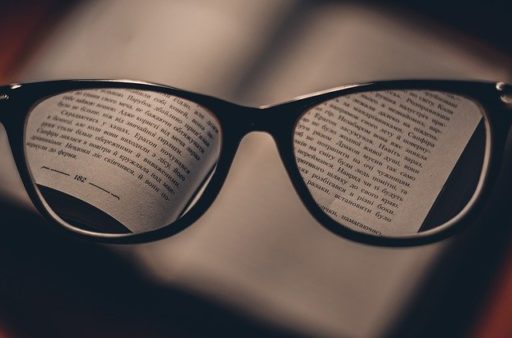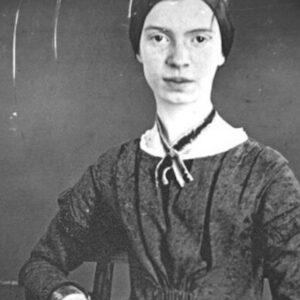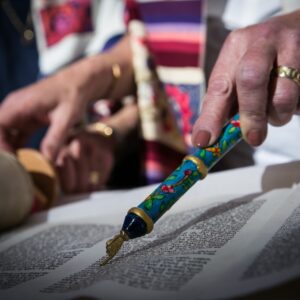“Close reading” is how I read. Period.
This is because I happened to enter college when what was called the New Criticism had recently been firmly established in academia.
New Criticism was a reaction against previous modes of teaching literature, which focused on the author’s biography or on the historical development of a text’s language. New Criticism said no: the text itself is an autonomous whole and must be understood as such.
The college textbook of New Criticism was Understanding Poetry, by Cleanth Brooks and Robert Penn Warren: a book so groundbreaking that it has its own Wikipedia entry. The thesis of Understanding Poetry, which was of course the textbook in my college “Introduction to Poetry” course—was that a poem is an “organic unity.” Its meaning lies in the “relationships” among its elements: meter, verse form, imagery, rhyme.
This was close reading par excellence. In reading a poem, we weren’t to know anything about the poet: not his life (yes, it was usually “his”) or his historical context. We attended “closely” to each of the poem’s elements, showing how they interrelated to create an organic whole.
So I went through college with the valuable skill of how to read a text closely, but with no sense of literary history. Even my graduate program in English Literature was short on historical context but big on close reading. For instance one of my professors, Paul Fussell, had just published his book Poetic Meter and Poetic Form in 1965, the year before I started grad school. Our papers for his course were (naturally) close readings of poems. Close reading so dominated my intellectual life that when I started dating the fellow graduate student who would become my husband, our first argument was over metaphor in Moby Dick.
And of course my doctoral dissertation was on imagery: specifically (close reading is always specific) on images of transcendence in Walt Whitman’s Song of Myself.
Then, just as I finished my doctorate and began my first college teaching job, something happened to the uncontested reign of New Criticism. The first negative reaction to its nonhistorical credo set in—in the form of feminist literary criticism.
The Women’s Movement of the 1960s had inspired some female literary critics to re-visit the nearly all-male literary canon and also to look for the first time at how women characters in literature had been portrayed. Along with many other young women professors around the country, I taught previously unheard-of courses: “Women Writers” and “Women as Characters in Literature.” (Novels in the canon, we found, usually ended with the female protagonist either married off or dead. Those were her options.)
These courses naturally brought in some biographical and historical context that was anathema to New Criticism… but in teaching them, I never abandoned close reading. It had become, foundationally, how I read. In fact, the first book I wrote was a close reading of the language of popular culture.
Since then, the reaction to New Criticism has, I’d say, gotten wildly out of hand. Instead of learning how to read, students in many colleges are instructed to expose the political contexts and power structures in which literature gets created. (For a delightfully sharp attack on this approach, see “On the Hatred of Literature”.)
In fact, a friend who teaches at an Ivy League university tells me that, though she herself continues to teach close reading and her students love it, most of her colleagues ignore or even disparage close reading.. Instead, literary studies have been absorbed into interdisciplinary interest-communities like indigenous studies, race studies, gender and sexuality, and more.
Another friend reports a more hopeful trend at his university. Though ideological readings still prevail in upperclass literature courses, a sophomore “gateway” course teaching close reading (as well as good, attentive writing) is very popular.
This is the trend we aim to support in this new blog, and why we’ve named the blog “Close Reading.” In counter-reaction to all the current ideological reactions to close reading, we want to model and encourage an engagement with texts themselves: those we write and those we read, including books published by Slant.
This doesn’t mean that all our posts will be close readings of poems—though occasionally they might be. Rather, our wide range of writers will address questions like:
- How does literature contribute to the common good?
- What do we hope to receive from reading books?
- What is the purpose of the key formal elements of literature such as irony and ambiguity?
- Why are the forms of attention that close reading requires helpful to the individual and the community?
- What changes in style and approach in contemporary writing are heartening—or concerning—in various genres?
- How are writers engaging with the ancient Western religious traditions? How are they remaining faithful to these sources while “making it new” for our time?
And we won’t be limited to literature. All the questions above can (and will) be applied to other art forms as well: paintings and sculpture, movies and plays, music and dance.
We aim to have a new post each Monday and Thursday. We hope you’ll be joining us for some enlivening reading.
Peggy Rosenthal has a PhD in English Literature. Her first published book was Words and Values, a close reading of popular language. Since then she has published widely on the spirituality of poetry, in periodicals such as America, The Christian Century, and Image, and in books that can be found here.





